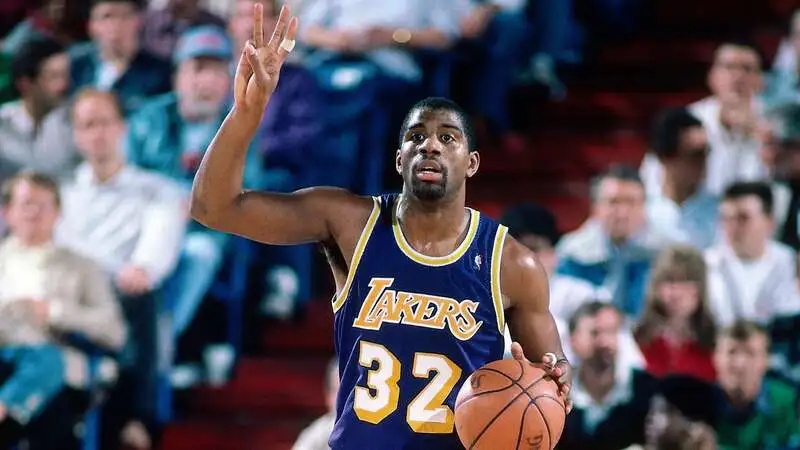Earvin “Magic” Johnson Jr. is a retired American professional basketball player who is widely regarded as one of the greatest point guards of all time. He played for the Los Angeles Lakers for 13 seasons, winning five NBA championships and three NBA Finals MVP awards. Johnson was known for his exceptional court vision, passing ability, and leadership skills. In this article, we will explore Magic Johnson’s wingspan, including measurements and how it contributed to his playing style.
Measurements
Magic Johnson was listed at 6 feet 9 inches (2.06 meters) tall during his playing career. However, his actual wingspan measurement is 7 feet 4 inches (2.24 meters). This is an impressive wingspan, especially for a point guard. In fact, Johnson’s wingspan is longer than the average wingspan for a player of his height.
Playing Style and Impact of Wingspan
Johnson’s long wingspan allowed him to play bigger than his size and dominate as a point guard. He was able to pass and rebound over defenders with ease, and he was an effective defender who could guard multiple positions. Johnson’s wingspan also helped him to disrupt passing lanes and get steals. His ability to make plays on both ends of the court made him a valuable asset to the Lakers.
Notable Plays Leveraging Wingspan
Johnson’s long wingspan allowed him to make some incredible plays throughout his career. One notable example is the steal he made in Game 6 of the 1980 NBA Finals against the Philadelphia 76ers. With the Lakers leading by one point and just seconds remaining in the game, Johnson stole the ball from Sixers center Caldwell Jones and dribbled out the clock to secure the championship for the Lakers. Another example is the block he made on a layup attempt by Boston Celtics forward Larry Bird in Game 4 of the 1987 NBA Finals. Johnson’s long arms allowed him to reach up and swat the ball away, preserving the Lakers’ lead and helping them win the game.
Advantages in Specific Skills
Johnson’s long wingspan had a significant impact on his passing and rebounding abilities. He was able to make passes that other players simply couldn’t, thanks to his long arms and large hands. Johnson’s rebounding numbers were also impressive for a point guard, and his wingspan undoubtedly played a role in his success in this area. For example, during the 1981-82 season, Johnson averaged 9.6 rebounds per game, which was the highest rebounding average of his career.
Legacy Impact
Johnson’s unorthodox size and long wingspan played a significant role in the success of the “Showtime Lakers” teams of the 1980s. His ability to play multiple positions and make plays on both ends of the court made him a valuable asset to the team. Johnson’s success also reinforced the value of wingspan for guards in the modern NBA. Many teams now look for guards with long arms who can disrupt passing lanes and make plays on defense.
Conclusion
In conclusion, Magic Johnson’s wingspan was a key factor in his success as a basketball player. His long arms allowed him to play bigger than his size and dominate as a point guard. Johnson’s ability to pass and rebound over defenders, disrupt passing lanes, and guard multiple positions made him a valuable asset to the Lakers. His legacy has reinforced the value of wingspan for guards in the modern NBA. While there are still many questions to be answered about the role of wingspan in basketball, there is no doubt that Magic Johnson’s wingspan was a major factor in his success on the court.
